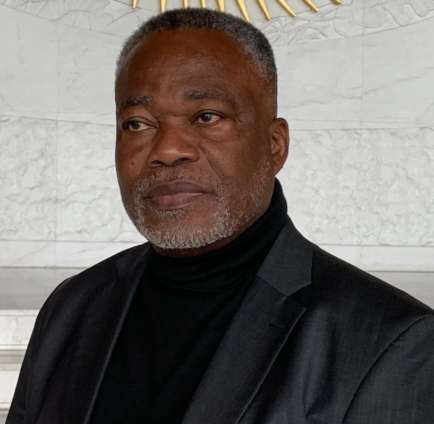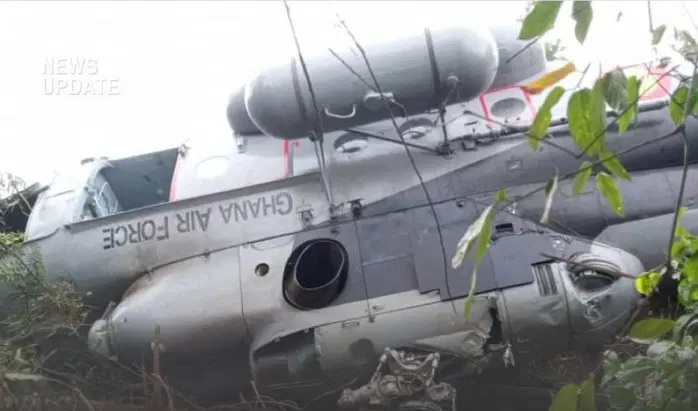Security analyst Col. Festus Aboagye (Rtd) has cautioned against rushing to conclusions over the recent helicopter crash in Adansi, clarifying that a brief loss of radar contact does not automatically indicate an emergency situation.
Speaking on the matter, Col. Aboagye explained that the helicopter reportedly went off radar 14 minutes after departure at 09:26 a.m.
He questioned the assumption that this meant a forced landing was necessary, asking where exactly the aircraft was at that moment — possibly near Atiwa, or other mountainous regions — and whether weather conditions such as heavy rain or lightning could have interfered with radar detection.
“The empirical evidence is that off-radar, it did not crash anywhere in the eastern region. It crashed in the Ashanti region, 13 kilometers from the landing point projected and about three minutes flight. So it was able to fly for 27 minutes after going off radar.”
Col. Festus Aboagye (Rtd)
According to him, during those 27 minutes, the aircraft would have passed over multiple towns and villages in southern Ghana.

If it had been in distress, as in a previous incident at Nkokoo, the pilot could have located an open space to land. This, he argued, makes it unlikely that the radar loss was linked to an immediate emergency.
He clarified that going off radar simply means the aircraft’s position is no longer being detected, which does not necessarily imply a malfunction or critical issue.
Citing facts from the incident, he noted that the crash site was in the Dampia forest, approximately 13 kilometers from Obuasi — just a short flight from its intended landing.
Competence of Crew Defended
Col. Festus Aboagye also addressed public speculation about the crew’s abilities, urging Ghanaians to dismiss suggestions that the accident resulted from inexperience or incompetence.
He singled out the pilot, Captain Peter Anala, noting his 13 years of experience as the most senior and skilled helicopter pilot in the Ghana Armed Forces.
Certified as Category C and approved for VIP flights, Squadron Leader Anala had flown high-profile passengers regularly and was no stranger to demanding operations.
“Look, a squadron leader category C helicopter pilot is different from Air Marshal Berkwin, who was flying fixed wing. They are completely different types of equipment. He had been trained in aircraft investigation at Cranfield University in the UK.”
Col. Festus Aboagye (Rtd)

The analyst highlighted that Anala frequently returned to Cranfield to deliver training sessions on aircraft investigations, a testament to his expertise.
The rest of the crew also brought substantial experience: the flying officer had five years in service, while the flight sergeant engineer had over 14 years. Collectively, their expertise spanned more than 32 years.
Col. Aboagye underscored that a sergeant engineer can be highly competent without necessarily holding the highest rank, and that rank alone does not determine skill.
For him, preliminary findings do not support claims of incompetence within the crew.
Helicopter Crash Analysis Requires Prompt Data Retrieval
Turning to the technical side of the helicopter crash, Col. Aboagye explained that the Z9 model involved was of Chinese origin and equipped with an anti-crash recorder, essentially a flight data recorder.
He stressed the need for urgent retrieval and analysis of this device, saying it is critical to determining the actual cause of the crash.
Whether the data is examined by Chinese experts, connected to systems in China, or sent to the U.S. National Transportation Safety Board, he maintained that timely action is essential.

“The information in that anti-crash recorder would be similar to the flight data recorder. All the parameters of the flight. But it does not include the interactions in the aircraft. That may not be included on the anti-crash data recorder.”
Col. Festus Aboagye (Rtd)
The analyst’s comments sought to inject a note of caution into public discourse, emphasizing that speculation based on incomplete information can cloud objective analysis.
In his view, facts such as the extended flight time after radar loss, the proven competence of the crew, and the potential environmental factors affecting radar contact should all be weighed before drawing conclusions about the incident.
As investigations continue, Col. Aboagye’s remarks underline the importance of separating assumption from evidence in the wake of aviation tragedies.
For him, the narrative around this helicopter crash must remain grounded in verified data rather than fueled by premature judgments.
READ ALSO: EU leaders, Zelenskyy Hold Call with Trump


















